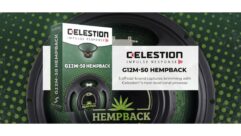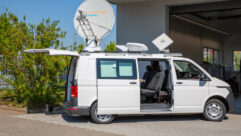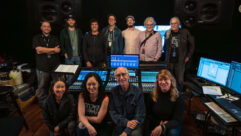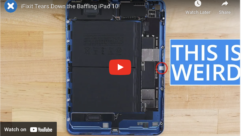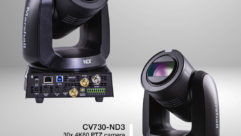ONE STEP BACK, TWO FORWARD
Jun 1, 2001 12:00 PM,
Andrew Martin
I am now convinced that any organization of sufficient size to take advantage of the cellular business design will profit from it.
IT IS TRUE THAT YOU CAN IMPROVE your business by creating more sales, reducing costs and retaining talented people. There are also other strategies.
My company, the ATM Group, is a manufacturer, designer and distributor of loudspeaker and videowall mounting hardware. The recent change we underwent — a successful one — was driven by an ideology and methodology that could have a positive impact in virtually any type of business.
In 1989, ATM Group began selling loudspeaker rigging hardware to anyone with the need and the will to invest in the hardware. Though the first years of business saw lean sales, within four years ATM Fly-Ware became a market leader for loudspeaker rigging product sales and was expanding rapidly to accommodate market demand.
Doesn’t this sound like the wishful entrepreneur’s dream? It certainly was my dream, but as Mom used to say, “Be careful what you wish for.”
THE PROS AND CONS OF EXPLODING
Soon, ATM Group was moving into an expansive new building, adding new equipment, bringing in a professional staff and becoming a professional manufacturing business growing up to 125% per year. This growth, combined with my pursuit of an EMBA, was a tremendous daily strain for the entire management staff. Somehow we persevered and emerged strong.
It still sounds like an entrepreneur’s dream come true; and it was a dream. I remember the conversations clearly:
“Andrew, we have too many orders and not enough time to fill them.”
“We need more people, more machinery, more engineering, more…”
“We can’t deliver what we are promising to our clients, what do we do?”
We did what seemed logical: We added more people. We spent large sums on automated machinery. And we redoubled our efforts to control production flow and client service. On the surface, all of these efforts seemed to work. We improved our delivery times and accommodated market demand fairly well, barring the occasional short-term problems in delivery that all manufacturers endure. About this time, being the entrepreneur that I am, I saw an opportunity to start up another manufacturing business in another industry. So I went off to do the thing that entrepreneurs do and diverted my attention to starting another business.
CRASH!
But I had made a mistake: I did not realize that our true production challenges were not the result of machinery obsolescence, head-count on the production line, or even how fast a particular part could be produced on a particular machine. All of these were symptoms caused by a faulty business model. Eventually, that faulty business model would force my attentions back to ATM Fly-Ware for some emergency care.
When I returned to ATM Fly-Ware, I observed a team of dedicated individuals doing everything they could to make our clients happy. The entire team was focused on one thing: delivering the products to the clients that needed them the most. So products that might normally have taken several weeks to manufacture were being built in a matter of days, and products that should have taken a few hours to manufacture would be stacked up behind the more complex parts, just waiting for a space in the production schedule. We had successfully created a logjam in production. Have you ever pushed against the wall to make it move, and it doesn’t move, so you push harder and longer? Pushing harder was clearly not the answer to our dilemma, but soon the answer became clear.
We had grown a successful organization by following a few core truths:
- Our organization understood our clients’ needs and designed products that worked well and were safe to use.
- Our organization educated our clients to ensure safe installations.
- Our organization specialized in product-traceable, high quality and low-volume products.
If these core truths were the foundation of our business, then why were we straying from what we knew how to do? ATM Fly-Ware knew how to build high-quality and low-volume products within the strict policies of a product-traceable risk management system. All we had to do was figure out a way to build them faster. To increase our production throughput, we had to find a way to eliminate the logjams and make the work flow steadily through the production line. Our experience told us that this was not an easy task, as we had been attempting to improve throughput for years without much success. There was one idea that we hadn’t attempted because it seemed too imposing. Inevitably, this was the idea that would satisfy our need for increased throughput and on-time delivery to our clients.
During the last two weeks of December 2000, we shut down the plant and went to work on completely reorganizing our operation from a traditional production line to a cellular production environment. The change involved moving every piece of machinery on the production floor, as well as reconfiguring workstations, offices, paper flow, inventory control areas and materials storage. Months of research, consultant input and planning went into the change management plan prior to implementation. When the time came for implementation, the investment took a full two weeks to complete. When finished, the performance improvements were staggering: We went from an average of 16 days late on deliveries to an average of 4 days early. Our production throughput increased up to 20%, and we were achieving these results with sales lead times cut in half (as seen in Figure 1).
HOW WE RECOVERED
Our traditional production line environment allowed for a linear product flow through the production line. That meant a part would occupy a work center until it was completed, and then it would move forward to the next work center. This works fine when products are similar in design and quantity, however ATM Fly-Ware has to build radically dissimilar parts in quantities that can range from one part to several thousand parts. If a batch of complex parts that required hours to process at the machining center was scheduled in front of a batch of simple parts that only required minutes to process, the net result was that all parts would require hours to actually finish. Additional machinery and operators do not provide greater throughput per man-hour, only a higher volume of delayed production due to scheduling conflicts.
We shifted to a cellular production model, and that has made all the difference. The cellular production environment splits a traditional production line into segments, each handling a particular product type. By splitting one production line into several specialized production lines, called production cells, the logjams are reduced because similar products are being produced within each of the production cells.
We created production cells for simple design parts, moderate design parts, complex design parts, aluminum yokes, part assembly and very large parts; and we are now getting ready to add a composite materials production cell. As an added benefit, we reduced work handling over 50% in some cases, and we regained the use of about 25% of our plant floor space as a result of the new production cell layout. Within the office suite, we eliminated process hand-offs over 50% and reduced foot travel time over 20%.
We are now poised to expand in order to satisfy client demand while keeping sales lead times reasonable. It is funny how we sometimes have to take a step backward in order to make a realization and move forward again.
WIDE APPLICABILITY
Whether in a service industry, contracting industry or retail industry, the idea of taking a linear process and making it cellular works. As an example for a contractor specializing in the house of worship market, consider one crew that handles all aspects of the project from start to finish. The completion of the project depends on the speed and skill of that crew in regard to all aspects of the installation.
Now suppose these aspects run the gamut from equipment installation and hook-up (such as loudspeaker and video projector rigging, sound system tuning, video system convergence, signal distribution, a CCTV system, an equipment user manual, client training sessions) all the way to demolition and electrical work. One crew will have quite a challenge trying to handle all the elements of a job if they, and they alone, are responsible for the whole job from beginning to end. Certain aspects of the installation will be fast, while others may suffer inefficiencies associated with unfamiliar territory for the installer.
In a cellular design, the contractor would build a central crew comprised of skilled specialists. The appropriate specialist would be sent to the project at the appropriate time, with the responsibility of handling his or her portion of the project. Not only will the speed of the installation be faster, the quality will be greater due to the specialized knowledge of the installers. If scheduled properly, these skilled task forces can accommodate more installations than would be possible if a linear installation crew was used.
Having recently experienced the rewards of making the commitment to change, I am now convinced that any organization of sufficient size to take advantage of the cellular business design will profit from it.
Andrew Martin is president and CEO of ATM Group Inc., operating two business units — ATM Fly-Ware and Marshal Risk Management Systems — in Carson, California. Visitwww.atmflyware.com.


